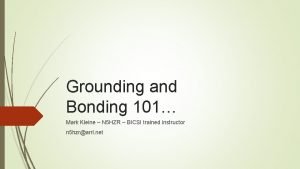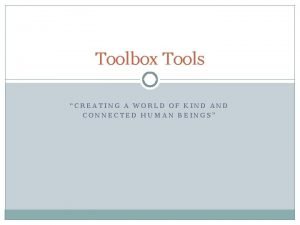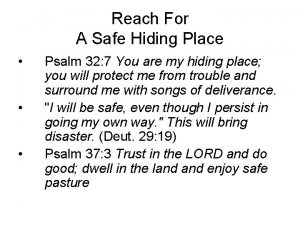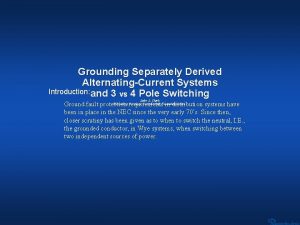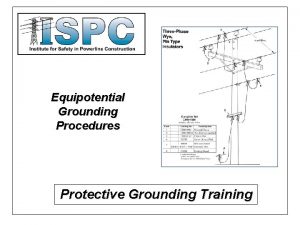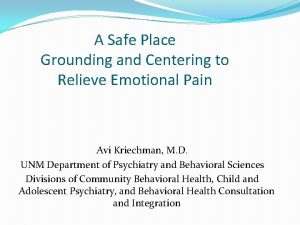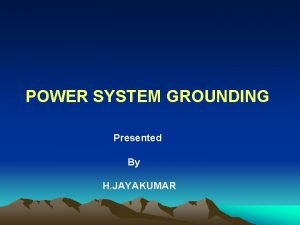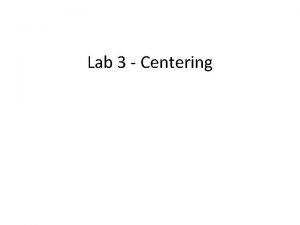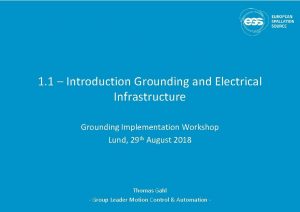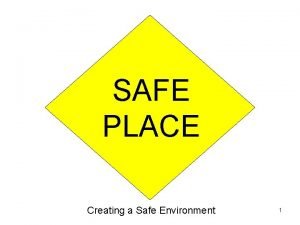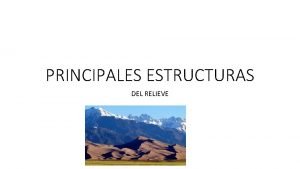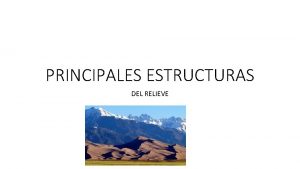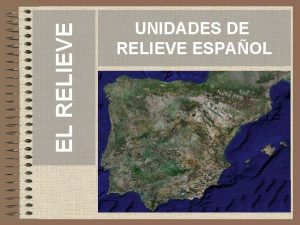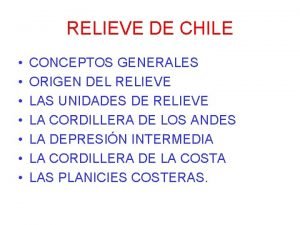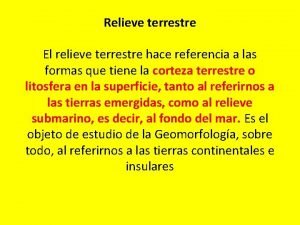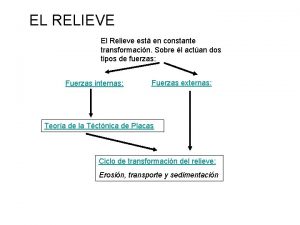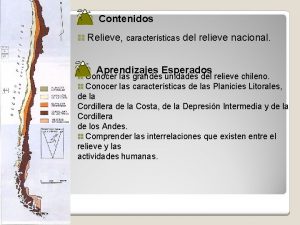A Safe Place Grounding and Centering to Relieve





















- Slides: 21

A Safe Place Grounding and Centering to Relieve Emotional Pain Avi Kriechman, M. D. UNM Department of Psychiatry and Behavioral Sciences Divisions of Community Behavioral Health, Child and Adolescent Psychiatry, and Behavioral Health Consultation and Integration

Grounding Detaching from Emotional Pain �Grounding is a highly active strategy that works via distraction and connection to the external word. �Enables person to self-soothe and disengage from the inner world of negative feelings (destructive urges, emotional pain, and feelings of being overwhelmed). �Can be applied to any situation where patients are caught in emotional pain – whenever and wherever they are triggered. �Can be done any time, anywhere, by oneself, without anyone else noticing it.

Keep Your Eyes Open Managing emotional pain through grounding, people are asked to �Keep their eyes open. �Notice everything about the world in front of them. �Notice everything about the present. �Recognize that right now, right here in the present, they are safe.

Grounding Is Not Relaxation �Grounding is not a relaxation exercise with eyes closed and a focus on breathing. �For some, closing your eyes can lead to dissociation (disconnecting from thoughts, feelings, memories, identity). �For some, a focus on breathing – even the word “relax” – may be triggers reminding them of sexual abuse.

Grounding Model from Seeking Safety 1. Safety as an ongoing priority in treatment. 2. Integrated treatment of PTSD and substance abuse. 3. Focus on restoring ideals that have been lost. 4. Attention to building an alliance, compassion for patients’ experience, giving patients control whenever possible, modeling what it means to “try hard” by meeting patients more than halfway, getting feedback about their genuine reactions to treatment. Najavits, L. M. , (2002) Seeking Safety A Treatment Manual for PTSD and Substance Abuse. New York: Guilford

Core Concepts of Seeking Safety �Stay safe. �Respect yourself. �Use coping – not substances – to escape the pain. �Make the present and future better than the past. �Learn to trust. �Take good care of your body. �Get help from safe people. �To heal fully from PTSD, become substance-free. �If one method doesn’t work, try something else. �Never, never, never, never give up!

Uses of Grounding in Seeking Safety �Minimize Risks – Self care regarding medical, emotional, physical, behavioral needs through creating pro-active behaviors. �Reduce Suicidal Risks and Self Harm – Develop coping responses and skills to managing intense emotions. �Gaining Control Over Extreme Symptoms – Cope with dissociation, flashbacks and related processes.

Why Do Grounding? �When you are overwhelmed with emotional or physical pain, you need a way to detach so that you can gain control over your feelings and stay safe. Grounding “anchors” you to the present and to the reality. �Many people struggle with feeling either too much (overwhelming emotions and memories) or too little (numbing and dissociation). In grounding, you can be both conscious of reality and able to tolerate it.

Pain Is Not Who You Are �Remember that pain is a feeling; it is not who you are. �When you get caught up in it, it feels like you are your pain, and that is all that exists. �But it is only one part of your experience – the others are just hidden and can be found again through grounding.

Introduction to Grounding �You can detach and distance from emotional pain. �If you notice yourself focusing on negative feelings, try to let them go, like leaves in a fall breeze. Turn away from them, focusing your attention even stronger on the outside world, like changing the channel on a TV to get a different show. �Keep your eyes open and look around the room as much as you like. �Remember that here you are always in control. �And try not to judge anything- just notice what is.

Three Types of Grounding We will try 3 types of grounding. See which types work best for you. �Mental Grounding: Focusing on Your Mind (describe environment or everyday activity in detail, say a safety statement, think of types/categories of things and list them) �Physical Grounding: Focusing on Your Senses (touch objects around you, dig your heels into the floor, notice your body, walk/eat/breathe mindfully) �Soothing Grounding: Being Kind to Yourself (picture people you care about, remember a safe place, say a coping statement)

Beginning Mental Grounding �Start by reminding yourself that you are safe. You are here with me, today is__ and you are at __. �Imagine your negative feelings are bundled up and put in a container. �Next, think of something you can put between you and that container of negative feelings: a wall, a big open field in the country – anything that creates safe distance between you and your negative feelings. Good!

Using Mental Grounding �Now let’s focus on the room. Look around the room. Describe objects, sounds, textures, colours, smells, shapes, numbers, and temperature. You can do this anywhere. �Name some facts. Try naming all the TV shows, sports teams, songs, cities you can remember. You can play a “categories” game with yourself. Try to think of types of songs, TV shows, cars, cities that begin with A, words that rhyme. Something fun. �Describe an everyday activity in lots of detail. For example, describe a meal that you like to cook, or all the things you pass on your way to work. �Imagine. Use an image: Glide along on skates away from your pain; change the TV channel to get to a better show; think of a wall between you and pain.

More Mental Grounding �Say a safety statement. “My name is __; I am safe right now. I am in the present, not the past. I am located in __; the date today is. ” �Read something, saying each word to yourself. Or read each letter backward so that you focus on the letters and not on the meaning of the words. �Use humor. Think of something funny to jolt yourself out of your mood. �Count to 10 or say the alphabet, very s…l. . . o…w…l…y.

Physical Grounding �Dig your heels into the floor – literally “grounding” them! Remind yourself that you are connected to the ground, to the floor. �Grab tightly onto your chair as hard as you can. Touch various objects around you: a pen, keys, your clothing, the table, the walls. Notice textures, colours, materials, weight, temperature. Compare all the objects you touch: Is one colder? Lighter? �Clench and release your fists. Press your palms together, then let go. �Notice your body: the weight of your body in the chair; wiggling your toes in your socks; the feel of your back against the chair. You are connected to the world.

More Physical Grounding �Walk slowly, noticing each footstep, saying “left” or “right” with each step. �Stretch. Extend your fingers, arms, or legs as far as you can; roll your head around. �Eat something describing its flavors, aromas, textures, in detail to yourself. �Run cool or warm water over your hands. �Jump up and down. �Carry a grounding object in your pocket – a small object (a small rock, ring, piece of cloth, yarn, clay) that you can touch whenever you feel triggered.

Soothing Grounding �Think of favorites. Think of your favourite color, animal, season, food, time of day, TV show. �Think of a favorite person. It may be someone you know or it could be a famous people you like. Picture that person for a while. Picture people you care about. Do you have any pictures of them you’d like to look at? �Still keeping your eyes open, think of a safe place. Somewhere very safe, soothing, and calming for you. Focus on everything about that place – the sounds, colours, shapes, objects, textures. �If can’t think of a safe place, that’s okay too – just let yourself notice this room since we’re safe here.

More Soothing Grounding �Say kind statements, as if you were talking to someone who looks to you for advice. “You are a good person going through a hard time. You’ll get through this. ” �Remember the words to an inspiring song, quotation, or poem that makes you feel better (e. g. the AA Serenity Prayer). �Say a coping statement: “I can handle this, ” “This feeling will pass. ” �Plan a safe treat for yourself, such as a nice meal, a warm bath, listening to your favorite music. �Think of things you are looking forward to in the next week – perhaps time with a friend, going to a movie or going on a hike.

How to Practice Grounding to Make It as Powerful as Possible �Practice as often as possible, even when you don’t need it, so that you’ll know it by heart. �Practice faster. Speeding up the pace get you focused on the outside world quickly. �Try grounding for a loooooonnnngggg time (20 -30 minutes). And repeat, repeat. �Try to notice which methods you like best – physical, mental, or soothing grounding methods, or some combination. �Create your own methods of grounding. Any method you make up may be worth much more than those we’ve talked about here, because it is yours.

How to Practice Grounding to Make It as Powerful as Possible �Start grounding early in a negative cycle, well before things get out of control. �Teach friends or family about grounding so they can help guide you with it. �Prepare in advance. Find places at home, your car, your work where you have prompts & reminders for grounding. �Create a tape of a grounding message and play it whenever you need it. �Think about why grounding works. Why might it be that by focusing on the external world, you become more aware of an inner peacefulness? Notice what works for you – why might those be more powerful for you than other methods? �Don’t give up!

Seeking Safety References �“Detaching from Emotional Pain (Grounding)” pp. 125 -136 in Seeking Safety: A treatment manual for PTSD and substance abuse, Najavits (2002) �http: //www. treatmentinnovations. org/seeking-safety. html
 Wɪəd
Wɪəd Safe feed safe food
Safe feed safe food Safe people safe places
Safe people safe places Virtual loss of gm
Virtual loss of gm Post glover hrg
Post glover hrg Grounding and bonding level 1 lesson 5
Grounding and bonding level 1 lesson 5 Arrl grounding and bonding pdf
Arrl grounding and bonding pdf Tony's safe place
Tony's safe place Breathing tool toolbox
Breathing tool toolbox A safe hiding place
A safe hiding place Millions billions trillions chart
Millions billions trillions chart Odd behavior chart
Odd behavior chart Grounding transformers
Grounding transformers Grounding system design
Grounding system design Separately derived system grounding
Separately derived system grounding Non separately derived system grounding diagram
Non separately derived system grounding diagram Personal protective grounding
Personal protective grounding End fed zepp antenna
End fed zepp antenna Step voltage and touch voltage
Step voltage and touch voltage Job card grounding
Job card grounding Seeking safety grounding
Seeking safety grounding Pxie-5775
Pxie-5775





